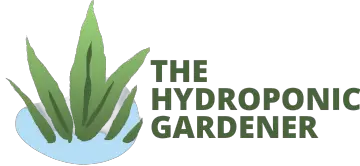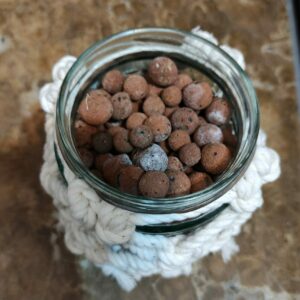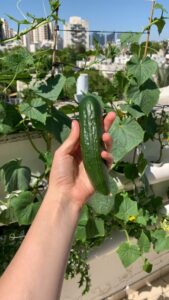If you’re a gardener, you know that a growing medium is an important part of growing healthy plants. Hydroton is the go-to choice of many gardeners, but it’s not the only option available. There are substitutes that will work just as well. there are some alternatives that you may not be aware of. In this blog post, we’ll explore 13 different options for what you can use instead of hydroton.
What is hydroton and what is it used for?
Hydroton, also known as clay pebbles, clay pallets and leca, is a type of clay hydrosphere and is often used as a growth medium. A growth medium is any material that can be used to support plant roots in a hydroponic system.
You can either put it in a net pot or, if you grow in a bucket, directly in the buckets – and fill your bucket with both water and clay pebbles. It can be used in both deep water culture and recirculating systems. Hydroton is durable, does not break down over time, and is easy to clean.
Why use an alternative?
There are a few reasons you might want to use an alternative to hydroton:
- Hydroton is often more expensive than other options, so if you are on a budget, you might want to consider one of the alternatives below.
- Hydroton can be difficult to find in some areas. You may buy it online, but if you live in an area where hydroton is not readily available, you might want to consider one of the alternatives below.
What can you use instead of hydroton?
So we figured by now that hydroton is great for growing plants, but what if you can’t find it or can’t afford it? There are actually a few other materials you can use instead. Check out this list of growing mediums to find the best substitute for hydroton in your gardening needs.
1. Peat moss:
Peat moss is a great substitute to hydroton. Despite it’s deceiving look, it is not soil, but partially decomposed plant leftovers. it is lightweight and easy to work with. Plus, it has a high water-holding capacity, which is ideal for hydroponic systems grow medium. Peat moss is also relatively inexpensive and easy to find.
Peat moss is an excellent alternative for clay pebbles, but there are a few things to keep in mind before using it. Peat moss is acidic, so you’ll need to adjust the pH of your water before using it. Peat moss can also be difficult to re-wet once it dries out, so make sure to keep it moist.
2. Coconut coir:
Coconut coir is a popular great grow medium. It is made from the fiber of coconut husks and is 100% natural. Coconut coir is also lightweight and easy to work with, and it has a high water-holding capacity.
It does have some drawbacks. Coconut coir can be difficult to find in stores, and it can be more expensive than hydroton. it also has a high sodium content, which can build up in your system and harm your plants. But if you keep track of your pH levels and clean the water – you have nothing to worry about.
3. Oasis cubes:
Oasis cubes are another popular growing medium among hydroponic growers. They are made from a type of expanded polystyrene (EPS) and are lightweight and easy to work with. Oasis cubes have a high water-holding capacity and are very absorbent.
The main drawback of oasis cubes is that they are not as durable as hydroton.
4. Rock Wool:
Rockwool is another popular growing medium. It is made from melted rocks and is very lightweight and easy to work with. Rockwool has a high water-holding capacity and is very absorbent.
The main drawback of rock wool is that it is not as durable as hydroton. It can also be difficult to find in stores, and it can be more expensive than hydroton.
5. Vermiculite
Next in line – vermiculite! it is a lightweight growing medium and easy to work with, and it has a high water-holding capacity. Plus, vermiculite can help to improve drainage in hydroponics systems.
Although vermiculite does have some disadvantages – like it being tough to locate in stores, and higher priced than hydroton. Additionally, vermiculite has a high sodium content which can potentially damage your plants if not managed properly. However, just like with coconut coir, as long as you keep track of your pH levels and clean the water regularly – you’ll be fine.
6. Perlite:
Perlite is another popular alternative to hydroton. It is made from volcanic glass and is 100% natural. Perlite is lightweight and easy to work with, and it has a high water-holding capacity. Plus, perlite can help to improve drainage in hydroponic systems.
Although perlite does have some disadvantages – like it being more difficult to find than hydroton, and slightly more expensive. Additionally, perlite can float in water, so you’ll need to weigh it down if you’re using it in a deep water culture system. But overall, perlite is great for the cause.
7. Grow Stones:
Made from recycled glass and 100% natural, grow stones are light weight and easy to work with, and they have a high water-holding capacity. Plus, grow stones can help to improve drainage in hydroponic systems.
While grow stones do have a few disadvantages – like being harder to find than hydroton and costing slightly more. Also, since they’re buoyant, you’ll need to keep them under water in a deep culture system if you’re using grow stones.
8. Cut pool noodles:
A cut pool noodle can also be used as an alternative to hydroton. It is lightweight and easy to work with, and it has a high water-holding capacity. Plus, a cut pool noodle can help to improve drainage in hydroponic systems.
This option is super popular for crafty hydroponic gardeners on a budget.

9. Regular stones and pebbles
You don’t have to purchase something fancy that was designed for gardening in the first place. When you go outside, you can pick up some stones and place them in your hydroponic system. This will work as long as the stone is clean and free of any harmful chemicals.
Different stones will have different properties, so you’ll want to do some research on the best type of stone to use for your hydroponic system.
You can also purchase stones from a garden center or home improvement store. Be sure to wash them thoroughly before adding them to your system.

11. Pea Gravel
You can also use pea gravel, which is readily available at most hardware stores.
Pea gravel is an interesting growth medium. it is inexpensive and easy to find. Plus, it has a high water-holding capacity and can help to improve drainage in hydroponic systems.
However, pea gravel can be difficult to work with and it can be challenging to keep the roots of your plants healthy in this type of medium.
12. Lava rocks
Lava rocks are a great hydroton alternative. They’re lightweight and easy to work with, and they have a high water-holding capacity. Plus, lava rocks can help to improve drainage in hydroponic systems.
Although lava rocks are more expensive than hydroton, they’re definitely worth the investment.

13. Rice hulls
Another common hydroton alternative is rice hulls. Rice hulls are the husks of rice grains that have been removed. They are lightweight and easy to work with, and they have a high water-holding capacity. Plus, rice hulls can help to improve drainage in hydroponic systems.
The main drawback of using rice hulls is that they can be difficult to find. Additionally, rice hulls can harbor harmful bacteria, so it’s important to sterilize them before using them in your hydroponic system.
You can sterilize rice hulls by boiling them in water for 30 minutes.
Conclusion:
So there you have it! A few hydroton alternatives that you can use in your hydroponic system. If you can’t find hydroton or can’t afford it, don’t worry – there are plenty of other options out there. Just make sure to do your research and find the best alternative for you and your plants.
There are many hydroton alternatives available to choose from. Peat moss, coconut coir, vermiculite, perlite, and even cut pool noodles can be used in place of hydroton. Regular stones and pea gravel are also great alternatives. The best hydroton alternative for you will depend on your budget and the needs of your plants.
Happy gardening!






